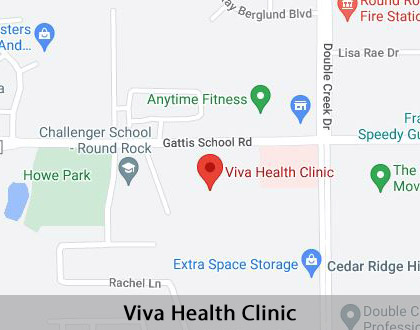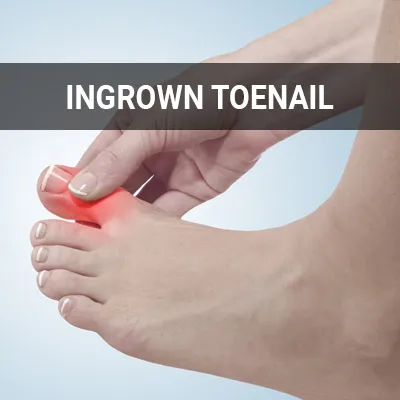Ingrown Nails Round Rock, TX
Many people have had the experience of an ingrown nail, particularly of the toenails. Ingrown nails can be an obnoxious and potentially risky health condition. To stay well and avoid the problems that can result from having an ingrown nail, it is important to know exactly what ingrown nails are, how to determine if someone has an ingrown nail, how to treat an ingrown nail, and how to prevent ingrown nails in the future.
For more information about nail care, our team at Viva Health Clinic in Round Rock is here to help. Call us at (512) 243-5872 to learn more.
Types of Ingrown Nails
Ingrown nails can technically occur on any nail of the hands or feet; however, they are much more common in the toes. According to the Cleveland Clinic, the big toe is the most frequent toenail affected by an ingrown nail. Ingrown nails happen when the upper corner of a nail grows into the surrounding tissue of the nail fold, causing skin inflammation and increased blood flow to the area. This increased blood flow can cause redness, swelling, and discomfort, making the area vulnerable to infection.
Sometimes ingrown nails are confused with damaged nails. The difference between a damaged nail and an ingrown nail is that an ingrown nail is a problem of nail growth, not necessarily the nail itself. Often the ingrown nail is still intact, but it has been cut improperly (rounded, instead of straight across), causing it to dig into the underlying skin. However, sometimes a damaged nail can cause an ingrown nail.
“Ingrown nails happen when the upper corner of a nail grows into the surrounding tissue, causing inflammation of the skin and increased blood flow to the area.”
Signs and Symptoms of Ingrown Nails
An ingrown nail can cause the skin of the upper outer corner of the nail to look red or swollen. It may be warm to the touch. If it has become infected, it may also bleed or ooze pus.
Aside from its undesirable appearance, an ingrown nail can also cause discomfort. People with an ingrown nail may experience pain, throbbing, or burning. It may also make it difficult to walk comfortably or wear close-toed shoes.
“People with an ingrown nail may experience pain, throbbing, or burning.”
Benefits of Professional Treatment
Sometimes people try to manage their ingrown nails at home, either by waiting to see if the nail gets better on its own or by experimenting with home remedies. However, this practice can be risky, resulting in more severe infection or more severe pain. In addition, people who have conditions such as diabetes should be especially cautious when it comes to managing an ingrown nail.
In general, an ingrown nail should be treated by a professional. A primary care practitioner or other healthcare professional can provide evidence-based care for an ingrown toenail. They can also prevent the problem from getting worse over time.
“In general, an ingrown nail should be treated by a professional.”
Check out what others are saying about our primary care practitioner services on Yelp: Ingrown Nails in Round Rock, TX
The Treatment Process
When a primary care practitioner evaluates an ingrown nail, they are looking to see the extent of the problem (mild, moderate, or severe) and also assess whether or not an infection is involved. Then, they will decide about what sort of treatment may be necessary.
Primary care practitioners can treat ingrown nails that are mild or moderate using a non-surgical technique. This may include a change in footwear, toe soaking with steroid medications, or using a barrier such as a cotton tip or gutter splint to prevent the nail from making contact with the underlying skin. A primary practitioner may use a surgical technique for more severe ingrown nails, such as removing a portion of the nail, using anesthesia and special tools. If an ingrown nail is particularly advanced or recurrent, a primary care practitioner may refer a patient to a specialist known as a podiatrist.
“For more severe ingrown nails, a primary practitioner may use a surgical technique, such as removing a portion of the nail, using anesthesia and special tools.”
Questions Answered on This Page
Q. What are the most common types of ingrown nails?
Q. How to tell if it is an ingrown nail?
Q. Do all ingrown nails need to be treated by a professional?
Q. How is an ingrown nail treated?
Q. How to manage after receiving ingrown nail treatment?
People Also Ask
Q. What can happen if an ingrown toenail goes untreated?
Q. How can I find the right primary care practitioner?
Q. What treatment options are available for general illnesses?
Follow-Up Care
After treating an ingrown nail, a patient should make sure to follow the instructions for aftercare provided by their practitioner. If the nail is mildly ingrown and receiving a conservative treatment, the patient should continue with proper footwear and soaks, applying steroid medicines or barriers as advised. If the patient has had a surgical procedure, they may be told to rest the toe for the next 24 hours, change dressings at a specific time, and gradually increase their walking.
A follow-up appointment may be necessary three to four weeks after a surgical procedure. It may also be necessary if a patient is having a recurrent problem after treatment or increasing symptoms.
“A follow-up appointment may be necessary three to four weeks after a surgical procedure.”
Frequently Asked Questions
Q. Who is most likely to get an ingrown toenail?
A. Anyone is vulnerable to an ingrown toenail. However, they are most common in young men and adolescents. Ingrown nails are also common in people who wear tight-fitting or improperly-fitting shoes.
Q. What causes an ingrown nail?
A. Often, a nail becomes ingrown because it is being cut too short or rounded instead of straight. However, according to the National Library of Medicine, ingrown nails can also happen because of tight-fitting shoes, trauma, genetic conditions, or other medical conditions.
Q. Can a nail be ingrown even if it is not red and swollen?
A. Yes. A nail can be growing into the nail fold and cause pain without causing visible symptoms. This is generally referred to as Stage 1 of an ingrown nail. Seeking treatment at this stage can prevent the problem from getting worse.
Q. Can a pedicure cause an ingrown nail?
A. Technically, any treatment a person receives that results in an improperly shaped nail (such as a manicure or pedicure) can cause an ingrown nail. Therefore, it is important to ensure that individuals seek care from technicians who are experts at taking care of nails and using proper hygiene practices.
Q. Can I avoid an ingrown toenail?
A. You can minimize your chances of getting an ingrown toenail by cutting the nail straight across when trimming your toenails. For patients whose nails are curved naturally, it is okay to cut straight across the curve. Never cut into the corners of the nails; rather, file the corners gently.
Start Feeling Better – Visit Us Today
By visiting us as soon as possible, our team can help get you the professional treatment you need. Instead of waiting around and allowing the symptoms to get worse, we can provide you with treatment options.
Definition of Medical Terminology
Call Us Today
If a person requires an evaluation for an ingrown toenail, they should contact us today at 512-243-5872 to find out which option may be right for them.
Helpful Related Links
- American Journal of Medicine. American Journal of Medicine. 2023
- American Medical Association (AMA). American Medical Association (AMA). 2023
- American Medical Society For Sports Medicine (AMSSM). American Medical Society For Sports Medicine. 2023
- Journal of the American Podiatric Medical Association. Journal of the American Podiatric Medical Association. 2023
About our business and website security
- Viva Health Clinic was established in 2023.
- We accept the following payment methods: American Express, Cash, Discover, MasterCard, and Visa
- We serve patients from the following counties: Williamson, Travis, McLennan
- We serve patients from the following cities: Pflugerville, Austin, Kyle, Waco, Leander, Cedar Park, Bastrop, Round Rock, Georgetown, Hutto, Liberty Hill, and Taylor
- National Provider Identifier Database (1104428416). View NPI Registry Information
- Norton Safe Web. View Details
- Trend Micro Site Safety Center. View Details
Back to top of Ingrown Nails










